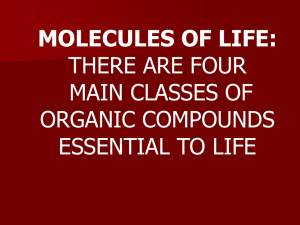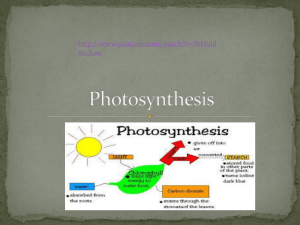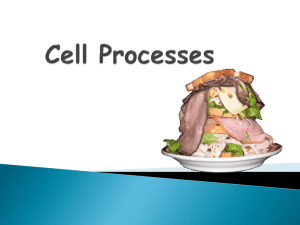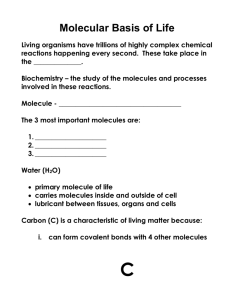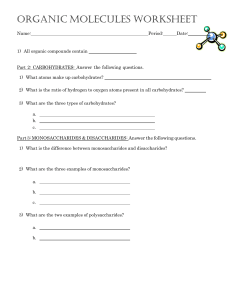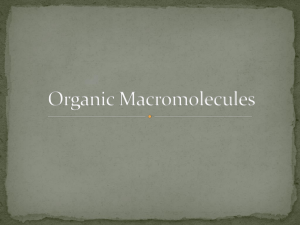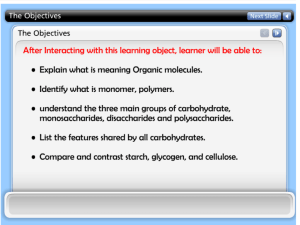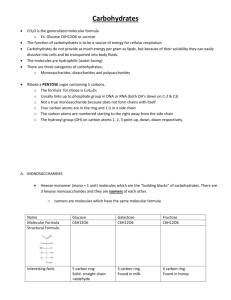Biological Molecules
advertisement
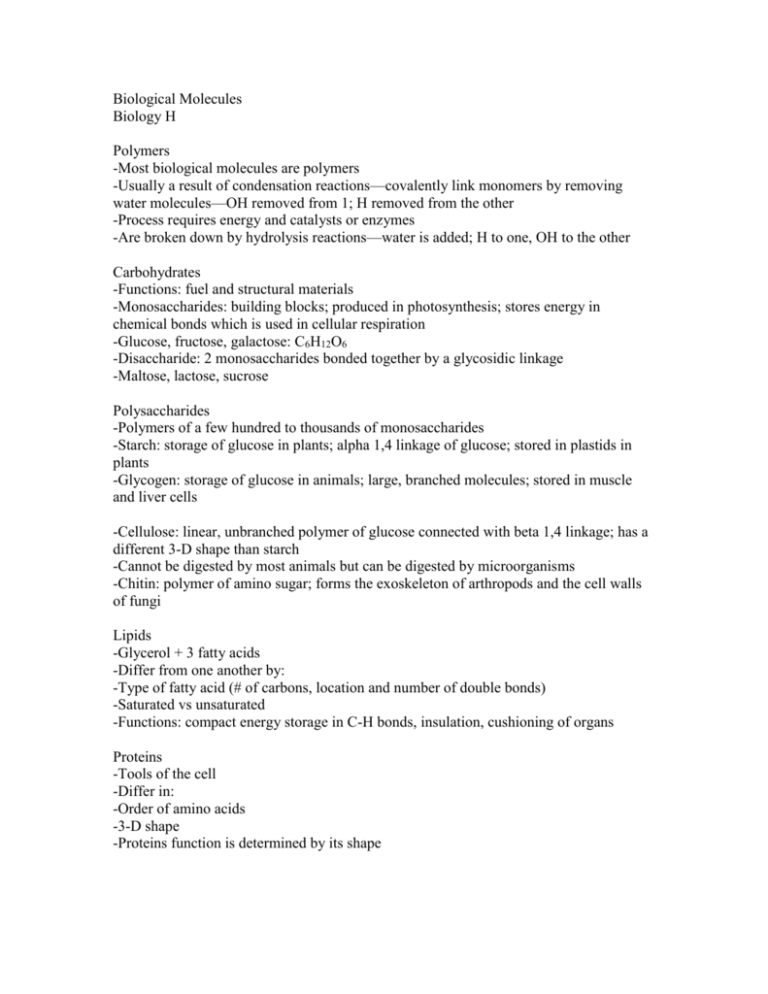
Biological Molecules Biology H Polymers -Most biological molecules are polymers -Usually a result of condensation reactions—covalently link monomers by removing water molecules—OH removed from 1; H removed from the other -Process requires energy and catalysts or enzymes -Are broken down by hydrolysis reactions—water is added; H to one, OH to the other Carbohydrates -Functions: fuel and structural materials -Monosaccharides: building blocks; produced in photosynthesis; stores energy in chemical bonds which is used in cellular respiration -Glucose, fructose, galactose: C6H12O6 -Disaccharide: 2 monosaccharides bonded together by a glycosidic linkage -Maltose, lactose, sucrose Polysaccharides -Polymers of a few hundred to thousands of monosaccharides -Starch: storage of glucose in plants; alpha 1,4 linkage of glucose; stored in plastids in plants -Glycogen: storage of glucose in animals; large, branched molecules; stored in muscle and liver cells -Cellulose: linear, unbranched polymer of glucose connected with beta 1,4 linkage; has a different 3-D shape than starch -Cannot be digested by most animals but can be digested by microorganisms -Chitin: polymer of amino sugar; forms the exoskeleton of arthropods and the cell walls of fungi Lipids -Glycerol + 3 fatty acids -Differ from one another by: -Type of fatty acid (# of carbons, location and number of double bonds) -Saturated vs unsaturated -Functions: compact energy storage in C-H bonds, insulation, cushioning of organs Proteins -Tools of the cell -Differ in: -Order of amino acids -3-D shape -Proteins function is determined by its shape
